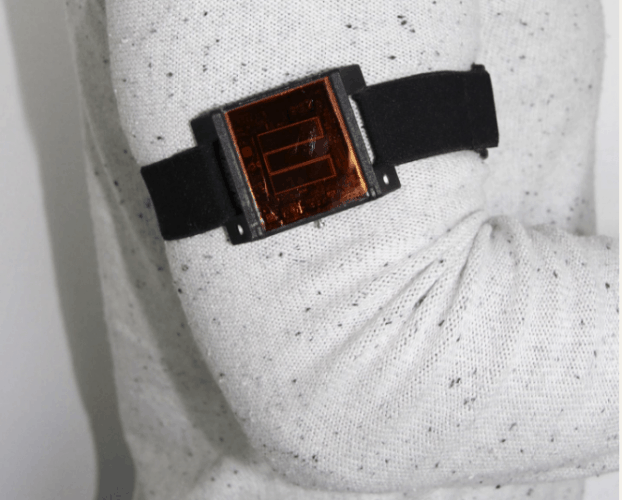
One of the biggest problems with implanted electronic devices is how to power them. Pacemakers, for example, need to be powered by batteries, which must be periodically replaced, entailing surgery and all the associated risks. But according to researchers in Switzerland, a photovoltaic cell under the skin could provide all the power needed to keep the battery constantly recharged.
Researchers at Bern University Hospital and the University of Bern have, for the first time, gathered real-life data on the potential of implanted solar cells. The team, led by Lukas Bereuter, gathered data from a small solar cell that was worn on a band around the upper arm of subjects; with an area of just 3.6 cm², the cells were small enough to be implanted. To simulate this, the cells were covered with a filter to mimic the optical properties of skin.
Currently, the size of implantable electronic devices is governed by the battery volume needed for an extended lifespan. While prototypes of implantable solar cells have been proposed, they had not been tested. The Bern project measured the output power of the type of cell that has been proposed over one-week periods in summer, autumn and winter. Regardless of the season, the team found that the cells generated much more than the 5 to 10 microwatts that a typical pacemaker would use, with even the poorest performing cell generating average of 12 microwatts.
In a paper in the journal Annals of Biomedical Engineering, Bereuter explains that as long as the catchment area of the cell, its efficiency and the thickness of the patient's skin are considered, the cell could be scaled up and applied to any mobile electronic device, for example deep brain stimulation systems for Parkinson's disease, epilepsy abatement and blood chemistry monitoring.
“By using energy-harvesting devices such as solar cells to power an implant, device replacements may be avoided and the device size may be reduced dramatically," he said.





Swiss geoengineering start-up targets methane removal
No mention whatsoever about the effect of increased methane levels/iron chloride in the ocean on the pH and chemical properties of the ocean - are we...